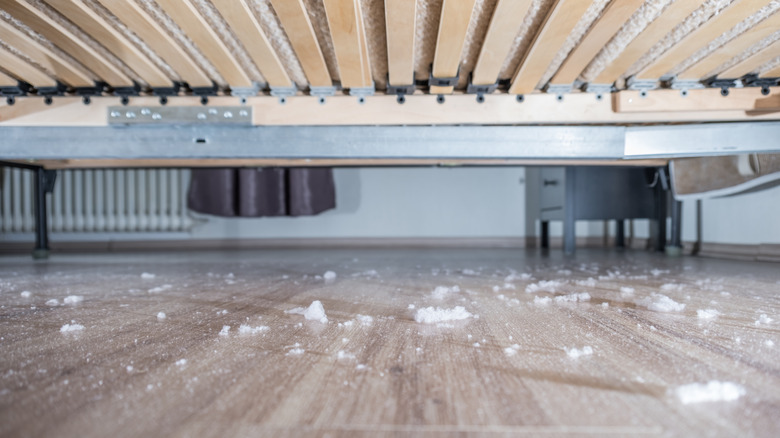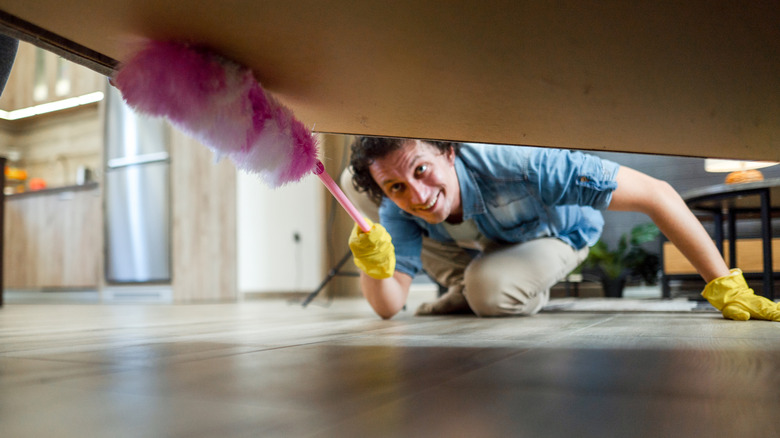Hidden In Plain Sight: The One Spot You Should Be Dusting, But Are Probably Overlooking
Dusting is a household chore that often demands your attention. The fine layer of dust that accumulates on the shelves and tabletops around your home makes it clear you can't put it off any longer. But there's one area that you might not remember to dust: under your bed. It's easy to ignore this spot because you probably don't look there every day, but failing to dust under your bed can actually affect the quality of your sleep.
In general, dusting is a crucial step in keeping your home looking neat and clean, but it also helps ensure your family's health. Dust contains allergens, such as mites, pollen, and pet dander, and can trigger allergy symptoms, such as itchy eyes and sneezing. However, it can also worsen respiratory conditions, like asthma. If dust, pet hair, crumbs, and other debris are allowed to collect under your bed, your bedroom's air quality can be affected, increasing your risk of allergy symptoms and leading to poor sleep. Neglecting to dust beneath your bed can lead to pest issues beyond dust mites, too — the crumbs that accumulate can attract insects like ants and roaches, which will trigger plenty of nightmares if they show up.
The good news is that dusting beneath your bed isn't difficult. In fact, you can easily clean under your bed without moving it if you prefer. The key is having the right tools for the job.
Clear that dust under your bed with these simple steps
While you can find many time-saving dusting hacks, it's best to keep things simple when dusting beneath your bed. A vacuum and a long-handled microfiber duster are essential tools, but you may also want a mop or broom. If your bed is light enough, you're better off moving it out of the way to ensure a thorough cleaning. However, if your bed frame is too heavy to move, use a hair dryer to blow the dust and other debris out into the open, where you can easily vacuum it up.
Start your dusting by vacuuming the heaviest layer of dust and larger debris from under your bed. If you haven't moved your bed, you can use an extension wand attachment for your vacuum to reach as far under the frame as you can. After picking up the most obvious dust, use a microfiber duster to remove the finer dust that remains. Microfiber dusters and cloths are particularly effective for cleaning because they have split fibers that trap dust and dirt better than other materials. Look for a duster with a long handle or a flexible design if you can't move your bed to improve your reach.
After cleaning with your duster, wipe the entire area with a damp cloth to remove any remaining dust. If it's been a while since you dusted under your bed, use an all-purpose cleaning spray to ensure that all the dust is removed.

